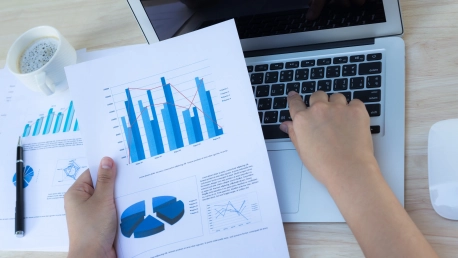The biopharmaceutical manufacturing landscape is undergoing a significant transformation, with the emergence of continuous bioprocessing as a key innovative approach. This article will explore the various facets of this paradigm shift and its impact on the industry.
The Shift from Traditional Batch Processing to Continuous Bioprocessing
The shift from traditional batch processing to continuous bioprocessing is redefining the operational efficiencies of biomanufacturing facilities. Continuous bioprocessing, unlike its batch counterpart that requires discrete steps and intermediate holding times, runs as a seamless, ongoing operation, thereby significantly enhancing productivity and ensuring a more consistent production flow.
Benefits of Continuous Bioprocessing Over Batch Processing
Continuous bioprocessing brings forth substantial improvements in equipment and resource allocation. With systems designed to function incessantly, manufacturers can circumvent the downtime that once punctuated each batch cycle. Moreover, this continuous operation translates to a leaner production footprint since facilities can often achieve the same output with smaller bioreactors and less labor, optimizing overall operational costs. With this methodology, biomanufacturers can produce biologics far more efficiently, leading to decreases in the cost of goods sold (COGS) and potential savings passed on to consumers.
Market Growth Induced by Continuous Bioprocessing
As of 2023, the continuous bioprocessing market is valued at $218 million, with projections indicating a rise to $599 million by 2028. Growing at a CAGR of 22.4%, this expansion is driven by an augmented discourse around life-saving biopharmaceuticals, the appeal of streamlined manufacturing workflows, and the overall reduction in time-to-market for these drugs. Contract Development and Manufacturing Organizations (CDMOs) and Contract Manufacturing Organizations (CMOs) are instrumental in this substantial market growth, rapidly adopting continuous bioprocessing technologies to remain competitive and cater to the burgeoning demand for biologics.
Advancements in Process Analytical Technology (PAT)
Real-time Process Optimization with PAT
The rise of Process Analytical Technology (PAT) in tandem with continuous bioprocessing marks a revolutionary step in managing and controlling the biopharmaceutical production process. PAT’s role lies primarily in its capability to provide real-time data on critical process parameters and quality attributes, enabling immediate corrections and adjustments. This proactive control, as opposed to previous reactive methods, helps maintain consistent product quality and reduces batch failures. Data from PAT also feed into advanced control strategies, such as automated feedback loops and predictive models, enhancing process reliability.
The Economic and Regulatory Benefits of PAT
Furthermore, PAT is instrumental in reducing cycle times and expediting product development, crucial in today’s fast-paced market. In addition to boosting productivity, this technology is central to Quality by Design (QbD) approaches that aim for intrinsic quality control within manufacturing processes. Financially, PAT can significantly lower operational costs through process optimization and waste reduction, while also aligning production with environmental sustainability goals. Regulatory agencies endorse the use of PAT because of its potential to ensure a continuous state of control, promoting regulatory compliance and facilitating the approval process for new biopharmaceuticals.
Chromatography Systems in Continuous Bioprocessing
The Essential Role of Chromatography in Downstream Bioprocessing
Chromatography systems are the workhorses of downstream bioprocessing, tasked with purifying and isolating therapeutic proteins from complex biological mixtures. The pivot to continuous bioprocessing has amplified the necessity for chromatography systems to match this non-stop production mode. In response, industry leaders are refining their downstream manufacturing solutions. These advancements aim to boost productivity, optimize yields, and reduce manufacturing costs, ultimately leading to cleaner processes and higher-quality biopharmaceuticals.
Innovations in Continuous Chromatography Technologies
In an industry where innovation equates to a competitive edge, techniques such as countercurrent and multicolumn chromatography are at the forefront of continuous bioprocessing advancements. These technologies epitomize the optimization of space and resource utilization, operating continuously to process large volumes of biologics while maintaining high purity standards. The emphasis on these chromatographic techniques reflects an industry trend toward streamlined, high-efficiency operations that not only escalate production volumes but also enhance the integrity of the biopharmaceuticals produced.
Impact on Downstream Processing and Application Areas
Transformation of Downstream Processing
Downstream processing is witnessing a significant makeover with the advent of continuous bioprocessing methods. Innovations like single-pass tangential flow filtration (SPTFF) and multicolumn chromatography are evidence of an industry pushing for greater efficiency, precision, and productivity. These technologies allow for ongoing separation and purification steps that enhance process control and output consistency while markedly reducing the bottleneck traditionally associated with batch-based downstream processing.
Monoclonal Antibodies (mAbs) and Other Applications
The market for monoclonal antibodies (mAbs) serves as a prime example of the growth and applicability of continuous bioprocessing. With an extensive clinical pipeline and frequent regulatory nods, mAbs necessitate manufacturing methods that are both cost-effective and scalable. Innovations such as single-use bioreactor systems boldly address these requirements, demonstrating not only improved productivity and versatility but also significant cost reductions, thus making a definitive case for industry-wide adoption of continuous bioprocessing.
Strategic Advances by Key Market Players
Partnerships and Technology Advancements
Strategic alliances and technological developments are propelling the push towards continuous bioprocessing. Danaher Corporation, Sartorius AG, Thermo Fisher Scientific Inc., and other industry heavyweights are rolling out a series of agreements, product introductions, and technology innovations designed to capture a greater market share and respond to the exploding demand for biopharmaceuticals. These market players are committed to advancing the field through ongoing innovation, thereby reshaping the landscape of biomanufacturing.
The Role of CDMOs and CMOs in Adopting Continuous Bioprocessing
The growing adoption of continuous bioprocessing by CDMOs and CMOs is pivotal in fueling the transition from batch processing. These organizations are not only embracing the technology but also involved in trailblazing partnerships and initiatives aimed at perfecting the art of continuous bioprocessing. For instance, Merck KGaA has entered a memorandum of understanding with Mycenax Biotech to integrate cutting-edge bioprocessing solutions. Similarly, WuXi Biologics has embarked on a pilot-scale end-to-end drug substance manufacturing using their ultra-high productivity platform, setting a new benchmark in the industry.









